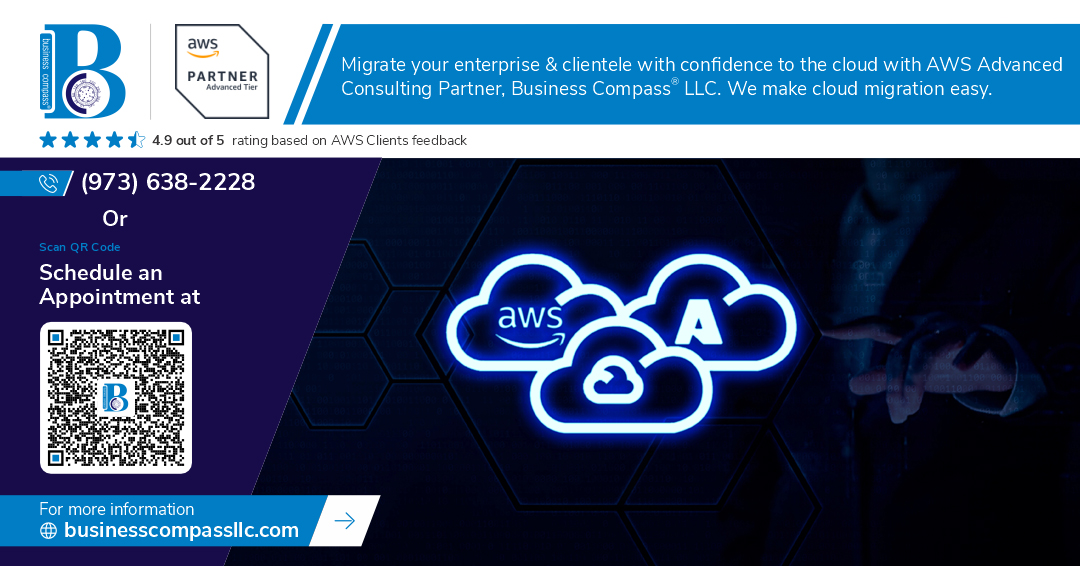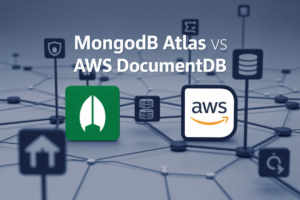Did your last “cloud transformation” project feel like trying to build a spaceship with an IKEA manual? You’re not alone. Nearly 78% of IT leaders report their cloud initiatives stalled or failed completely in the last two years.
Cloud native isn’t just another tech buzzword to ignore. It’s an entirely different approach to building and running applications that can actually deliver on those promises of scalability and resilience you’ve been chasing.
I’ve spent the last decade helping companies navigate cloud native transformations, and I’m about to break down everything you need to know about this approach in plain English. No marketing fluff, no vendor pitches.
But first, let me show you why most organizations get cloud native completely wrong from day one.
The Evolution and Fundamentals of Cloud Native
Defining Cloud Native: Beyond the Buzzword
Cloud native isn’t just another tech buzzword—it’s a fundamental shift in how we build and run applications. Imagine software designed from the ground up to thrive in the cloud, not just survive there. It’s about embracing containerization, microservices, and automation to create resilient, scalable systems that evolve quickly with your business needs.
The Journey from Traditional Infrastructure to Cloud Native
Remember the old days? Monolithic applications running on dedicated servers, painful scaling, and deployment windows that kept everyone working late. Cloud native flips that script entirely. We’ve moved from physical servers to VMs, then to containers, and now to orchestrated environments where infrastructure becomes code and deployments happen continuously without breaking a sweat.
Key Principles of Cloud Native Architecture
Think of cloud native as built on four pillars: containerization, microservices, automation, and orchestration. Containers package everything your app needs. Microservices break your system into manageable, independent pieces. Automation eliminates repetitive tasks. And orchestration (hello, Kubernetes!) ties it all together, managing where and how your containers run across your infrastructure.
How Cloud Native Differs from Cloud Computing
Cloud computing gave us infrastructure on demand. Cloud native takes that foundation and builds something more powerful on top. While cloud computing focuses on where applications run, cloud native revolutionizes how they’re built, deployed, and managed. It’s like comparing renting an apartment (cloud computing) to designing a smart home that adapts to your needs automatically (cloud native).
Core Components of Cloud Native Technologies
Core Components of Cloud Native Technologies
A. Containers: The Building Blocks of Cloud Native
Containers are like tiny, self-contained apartments for your applications. They package everything your app needs—code, runtime, system libraries—all bundled together. This isolation means your app runs the same way everywhere, whether on your laptop or in a massive data center. No more “it works on my machine” headaches!
B. Kubernetes: Orchestrating Your Container Ecosystem
Think of Kubernetes as the conductor of your container orchestra. It automates deployment, scaling, and management of your containerized applications. Need more instances during traffic spikes? Kubernetes handles it. Container crashed? It’ll spin up a new one. It’s the difference between herding cats and having a well-trained team that just gets things done.
C. Microservices: Breaking Down Monolithic Applications
Remember that massive, tangled codebase nobody wanted to touch? Microservices architecture smashes it into smaller, independent services that do one thing really well. Teams can work autonomously, deploy frequently, and scale individual components instead of the whole behemoth. It’s like replacing a giant Jenga tower with building blocks that won’t collapse when you move one piece.
D. Service Meshes: Managing Service-to-Service Communication
As your microservices multiply, the communication between them gets chaotic. Enter service meshes—an infrastructure layer that handles service-to-service communication. They manage traffic, enforce policies, and collect metrics without cluttering your application code. It’s like having traffic lights and road signs that magically appear exactly when and where you need them.
E. Serverless Computing: The Next Evolution
Serverless doesn’t mean “no servers”—it means “not your problem anymore.” You write code, the cloud provider runs it when triggered, and you pay only for what you use. No capacity planning, no infrastructure management. Just pure focus on your business logic. It’s cloud computing stripped down to its essence—maximum value with minimum overhead.
Business Benefits of Cloud Native Adoption
Business Benefits of Cloud Native Adoption
A. Scalability on Demand: Meeting Fluctuating Workloads
Cloud native architecture isn’t just a tech buzzword—it’s a business game-changer. When customer traffic spikes unexpectedly or your application suddenly goes viral, cloud native systems automatically scale resources up or down. No more panic-buying servers or watching money drain away on unused capacity. Your infrastructure finally breathes with your business.
B. Cost Optimization Through Resource Efficiency
Gone are the days of paying for idle servers “just in case.” Cloud native approaches let you pay only for what you actually use. Think of it as switching from leaving all your home lights on 24/7 to smart lighting that activates only when needed. Companies typically report 20-30% cost reductions after migration, with some seeing savings upwards of 50% for certain workloads.
C. Accelerated Time-to-Market for New Features
Remember when deploying new features took months? Cloud native slashes that timeline dramatically. Development teams can work on smaller, independent components simultaneously rather than waiting for the entire application to be ready. The result? Features that once took quarters to ship now deploy in days or weeks, keeping you ahead of competitors.
D. Enhanced Resilience and Disaster Recovery
Cloud native applications are built to expect failure rather than hope for perfection. If one component breaks, others continue functioning—much like how a city keeps running even when a single street is closed. This approach means fewer catastrophic outages, more predictable recovery times, and ultimately, happier customers who experience fewer disruptions.
Implementing Cloud Native in Your Organization
Implementing Cloud Native in Your Organization
A. Assessing Your Current Infrastructure Readiness
Your infrastructure readiness assessment isn’t just busywork—it’s your roadmap to cloud success. Take stock of your current systems, identify technical debt, and pinpoint legacy applications that need modernization. This critical first step prevents costly mistakes and helps you build a realistic transformation timeline.
B. Planning Your Cloud Native Migration Strategy
Don’t dive into cloud native without a solid game plan. Your migration strategy should prioritize applications based on business value and technical complexity. Start with low-risk, high-reward applications to build momentum. Remember—phased migrations typically outperform “big bang” approaches that overwhelm teams and introduce unnecessary risks.
C. Choosing the Right Cloud Provider for Your Needs
The cloud provider debate isn’t just AWS vs. Azure vs. Google Cloud. Each brings distinct strengths to the table. Consider factors beyond just price—examine service offerings, geographic coverage, compliance certifications, and ecosystem compatibility. Many organizations thrive with multi-cloud approaches that leverage each provider’s unique advantages while avoiding vendor lock-in.
D. Building the Necessary Technical Skills in Your Team
Your cloud transformation will stall without the right skills on board. Invest in upskilling existing team members while strategically hiring for skill gaps. Focus on container orchestration, infrastructure-as-code, CI/CD pipelines, and cloud-specific services. Create learning paths that blend formal training with hands-on projects to accelerate your team’s cloud expertise.
E. Managing the Cultural Shift to DevOps Practices
The hardest part of cloud native? It’s rarely the technology—it’s the people. DevOps culture requires breaking down silos, embracing automation, and shifting to shared responsibility models. Support teams through this transition with clear communication, celebrating small wins, and ensuring leadership visibly champions the new ways of working.
Security Considerations in Cloud Native Environments
A. Shifting Security Left: DevSecOps Practices
Security isn’t something you bolt on at the end anymore. In cloud native environments, you need to bake it into every stage of development. DevSecOps merges security with DevOps, making everyone responsible for security, not just the security team. Tools like automated scanning and policy-as-code help catch vulnerabilities before they hit production.
B. Container Security Best Practices
Containers are everywhere in cloud native, but they come with unique security challenges. Start with minimal base images to reduce attack surface. Never run containers as root. Implement rigorous image scanning to catch vulnerabilities before deployment. Use runtime security tools to monitor suspicious behavior. And remember: container security is about layers – no single solution does it all.
C. Managing Secrets and Credentials
Your cloud native apps are only as secure as your secrets management. Hardcoded credentials in your containers? That’s basically leaving your house keys under the doormat. Use dedicated secrets management tools like HashiCorp Vault or cloud provider solutions. Implement proper access controls, rotation policies, and audit trails. And please, stop storing secrets in environment variables or config files – it’s 2025 already!
D. Compliance and Governance in Distributed Systems
Cloud native systems scatter your data and processing across dozens of services and clusters. This makes compliance tracking a nightmare without proper tooling. Implement policy-as-code solutions that enforce governance automatically. Create continuous compliance pipelines that validate your infrastructure against regulatory frameworks. The distributed nature of cloud native doesn’t excuse you from compliance – it just means you need smarter approaches to achieve it.
Real-World Cloud Native Success Stories
How Netflix Revolutionized Streaming with Cloud Native
Netflix completely ditched their data centers in 2016, going all-in on cloud native architecture. Their microservices approach lets them push code thousands of times daily with minimal disruption. When 190+ million subscribers hit “play” simultaneously, their cloud infrastructure scales instantly – something impossible with traditional systems. Their chaos engineering tools like Chaos Monkey deliberately break things to build resilience.
Financial Services Transformation Through Cloud Native
Banks aren’t exactly known for cutting-edge tech, but cloud native is changing that narrative fast. JPMorgan Chase migrated 300+ applications to cloud native platforms, slashing deployment times from months to minutes. Capital One closed all data centers, becoming the first bank to go fully cloud native. The results? Fraud detection algorithms now process transactions 99% faster, saving millions in potential losses while dramatically improving customer experiences.
Healthcare Innovation Using Cloud Native Technologies
The pandemic accelerated healthcare’s cloud native adoption like nothing before. Kaiser Permanente scaled their telehealth platform from handling 20 daily appointments to 40,000+ overnight using containerized microservices. Cloud native enables HIPAA-compliant patient data sharing across previously siloed systems. Genomics research teams now process DNA sequencing in hours instead of weeks, dramatically accelerating breakthrough treatments for previously untreatable conditions.
Overcoming Common Cloud Native Challenges
Managing Complexity in Distributed Systems
Cloud native systems can quickly turn into a tangled mess of microservices talking to each other. Trust me, I’ve seen teams drown in complexity they created themselves. The solution? Proper service boundaries, clear documentation, and automation tools that make sense of the chaos before it overwhelms your team.
Debugging and Monitoring Microservices
Gone are the days when you could just attach a debugger and step through code. In microservices land, a single request might touch 20 different services! Modern observability tools like distributed tracing are your new best friends. They connect the dots between services and show you exactly where things went sideways.
Controlling Cloud Costs at Scale
The cloud’s pay-as-you-go model seems great until your bill suddenly doubles. Been there? Most teams have. The trick is implementing governance early – tagging resources properly, setting spending alerts, and regularly hunting down idle resources. Sometimes the most cost-effective cloud service is the one you turn off.
Avoiding Vendor Lock-in
Cloud providers want you all-in on their ecosystem. And their tools are tempting! But smart teams use abstraction layers where it matters, adopt open standards like Kubernetes, and regularly practice “cloud evacuation drills” to ensure they can actually migrate if needed. Your leverage in negotiation depends on your ability to walk away.
Maintaining Performance During Migration
Moving to cloud native isn’t an overnight switch. It’s messy. Hybrid architectures, with some components modernized while others remain traditional, are inevitable pit stops. The key is incremental migration with parallel systems, feature flags to control traffic flow, and comprehensive performance testing at each stage.
Future Trends in Cloud Native Technologies
AI and Machine Learning in Cloud Native Operations
The cloud native world isn’t just embracing AI—it’s turbocharging it. Kubernetes clusters now automatically scale and self-heal through ML algorithms that predict traffic patterns before humans notice issues. Companies deploying these intelligent systems report 40% fewer outages and dramatically faster incident response times. The future? Your infrastructure will basically manage itself.
Edge Computing and Cloud Native Convergence
Cloud native principles are racing to the edge, transforming how we process data where it’s created. This isn’t just tech talk—it’s revolutionizing everything from manufacturing floors to retail spaces. Edge deployments using containerized microservices deliver sub-millisecond responses while slashing bandwidth costs by 60%. The gap between cloud and edge is disappearing faster than anyone predicted.
The Rise of Platform Engineering
Platform teams are becoming the secret weapon for cloud native success. They’re building internal developer platforms that abstract away infrastructure complexity while enforcing security guardrails. Developers go from idea to production in hours instead of weeks, with 73% reporting higher job satisfaction. This isn’t just a trend—it’s redefining how organizations structure their technical teams.
Sustainability and Green Computing in Cloud Native
The environmental impact of cloud computing can’t be ignored anymore. Forward-thinking organizations are leveraging cloud native architectures to dramatically reduce energy consumption—optimizing workloads, implementing automatic scaling, and measuring carbon footprints. Some companies report up to 80% energy savings after containerizing legacy applications. Green cloud native isn’t just good PR—it’s becoming a business imperative.
Cloud native technology has revolutionized how organizations build, deploy, and scale applications. From its evolution as a response to traditional infrastructure limitations to its core components like containers, microservices, and orchestration platforms, cloud native approaches offer unprecedented flexibility and efficiency. The business benefits—including accelerated innovation, improved scalability, and cost optimization—have made cloud native adoption essential for organizations seeking competitive advantage in today’s digital landscape.
As you embark on your cloud native journey, remember that successful implementation requires thoughtful planning, cultural transformation, and ongoing attention to security considerations. The success stories we’ve explored demonstrate that organizations of all sizes and across industries can overcome common challenges to achieve remarkable results. Looking ahead, emerging trends like AI integration, edge computing, and GitOps suggest cloud native technologies will continue to evolve, offering even greater opportunities for those prepared to embrace this transformative approach to building and running applications.




















